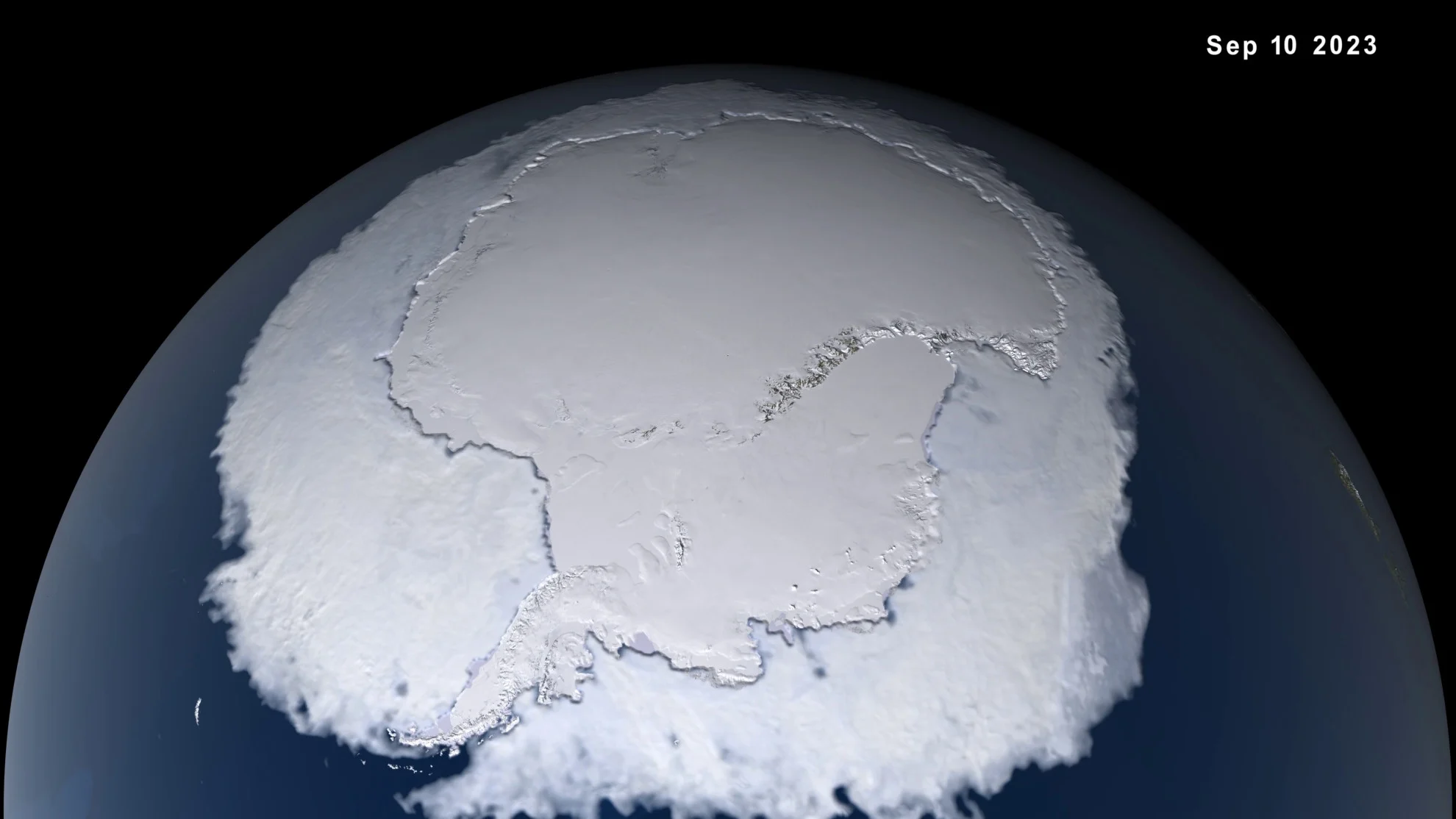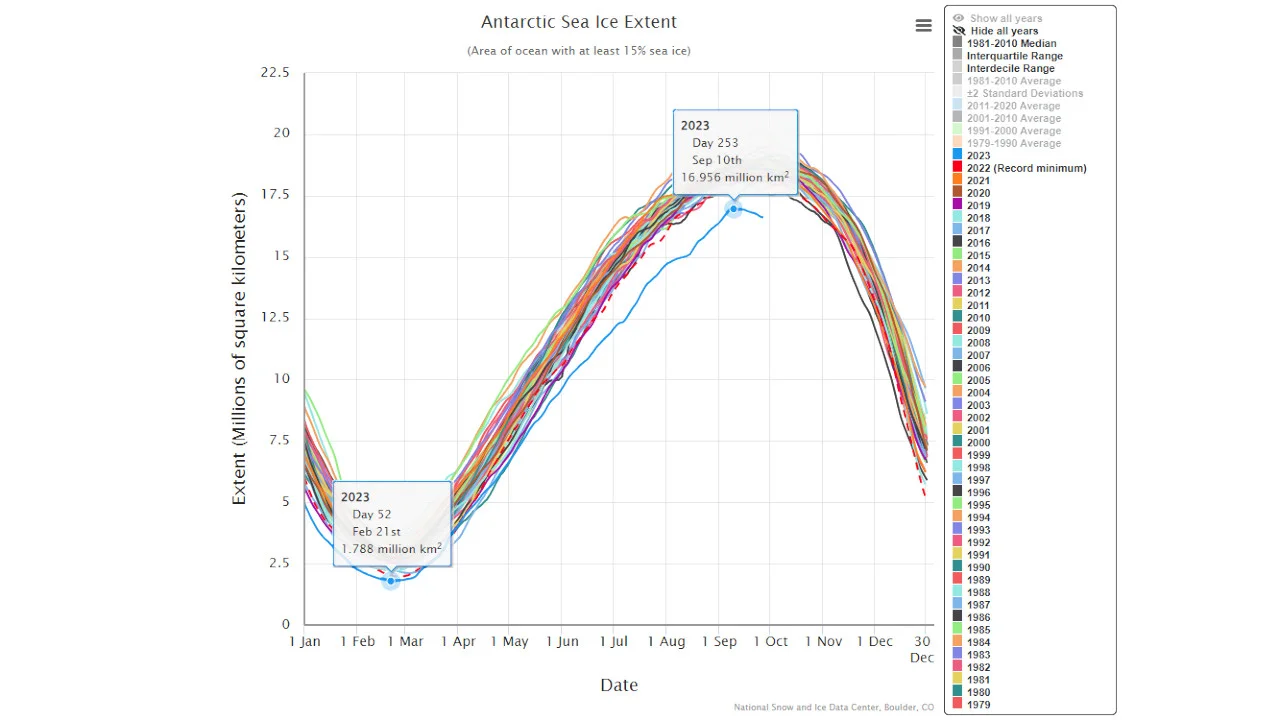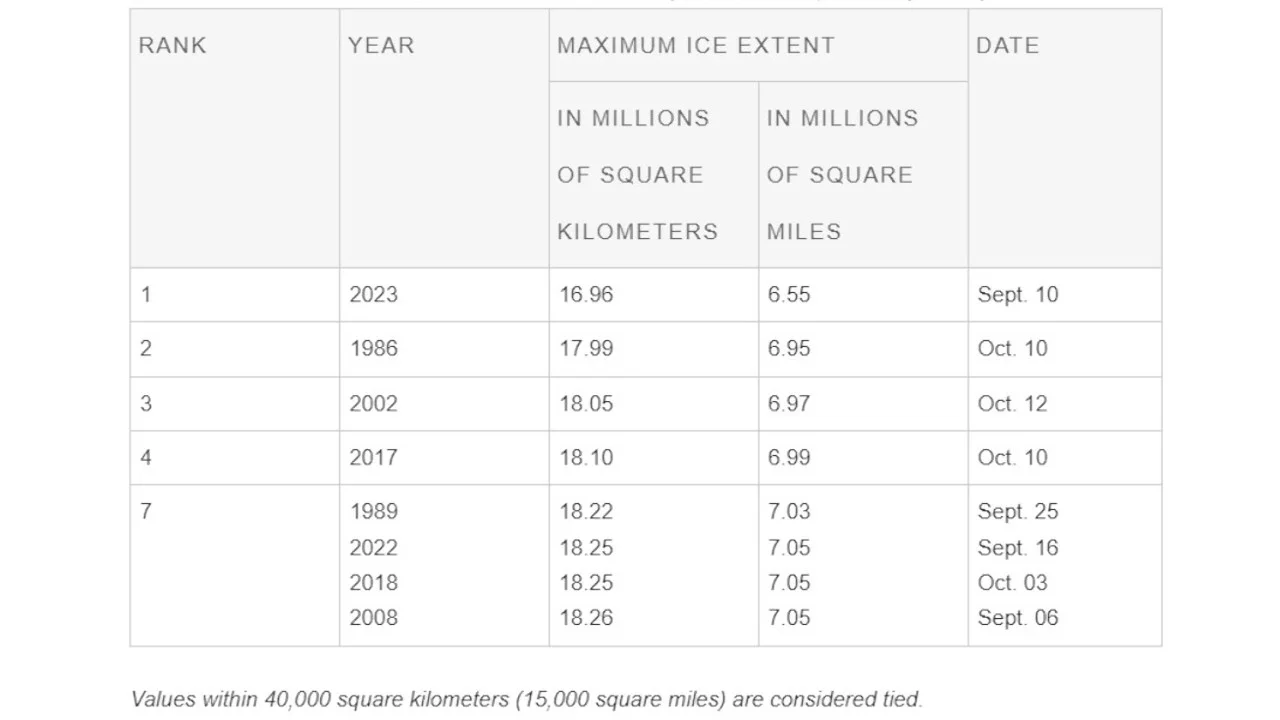
Antarctic sea ice sets another alarming new record for 2023
Experts speculate that the Antarctic sea ice system has entered a new regime of much lower ice extent.
Arctic sea ice just reached its yearly minimum, ranking as the sixth lowest extent we've seen since 1979. Meanwhile, at the other end of the world, Antarctic sea ice just set its second alarming new record for 2023, as scientists record the smallest winter maximum ever seen in the waters surrounding the continent.
Each year, sea ice in the Arctic and Antarctic follows similar but opposite patterns. In the north, we see the winter maximum extent sometime in late February or early March, then the ice melts down to a summer minimum extent by September. Meanwhile, in the south, it's the reverse — the summer minimum is seen sometime in late February, and the winter maximum occurs in September.
This year, Arctic sea ice continued the shrinking trend we've seen for decades. The 5th smallest winter maximum extent was logged on March 6, and now the 6th smallest summer minimum was catalogued on September 19.
However, something more alarming is going on in the Antarctic.
There, sea ice extent already set a new record for the smallest summer minimum on February 21, 2023. The total sea ice extent was just 1.788 million square kilometres, which was 136,000 sq km below the previous record of 1.924 million sq km set on Feb. 25, 2022.
Just this week, the U.S. National Snow and Ice Data Center, along with NASA, announced that Antarctic sea ice reached its winter maximum for 2023 on September 10.

This Charctic graph of sea ice extent for Antarctica shows the yearly patterns of ice melt and growth since 1979. This graph also highlights the Feb. 21 record low summer minimum and the Sep. 10 record low winter maximum. Credit: NSIDC/Scott Sutherland
It was, by far, the smallest winter maximum we've seen around the continent since record keeping began in 1979.
"It's a record-smashing sea ice low in the Antarctic," Walt Meier, an NSIDC sea ice scientist, said in the NASA press release. "Sea ice growth appears low around nearly the whole continent as opposed to any one region."
The previous smallest winter maximum was set back in 1986, when it was recorded at around 18 million square kilometres. This was before the region started a general trend of slightly larger winter maximums from the late 1980s through the 2010s.
After extremely slow ice growth through southern fall and winter this year, the 2023 Antarctic sea ice maximum came in at 16.96 million sq km, over 1 million sq km smaller than the previous record.

The eight smallest Antarctic sea ice extents are listed in this chart, with 2023 now ranking as the smallest. Credit: NSIDC
According to NASA: "Scientists are working to understand the cause of the meager growth of the Antarctic sea ice, which could include a combination of factors such as El Nino, wind patterns, and warming ocean temperatures. New research has shown that ocean heat is likely playing an important role in slowing cold season ice growth and enhancing warm season melting. This record-low extent so far in 2023 is a continuation of a downward trend in Antarctic sea ice that started after a record high in 2014. Prior to 2014, ice surrounding the continent was increasing slightly by about 1% per decade."

